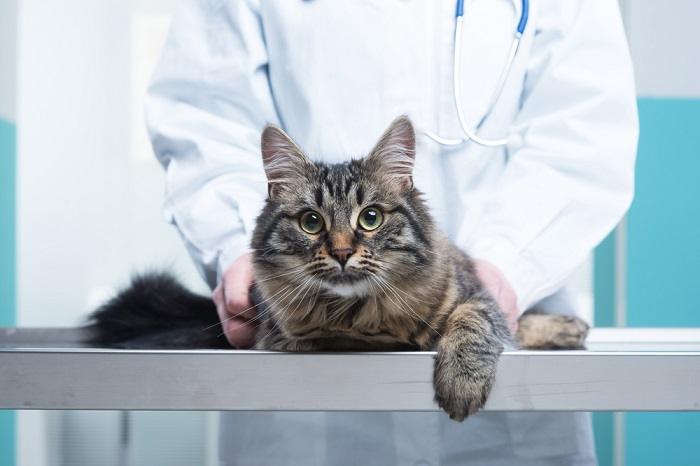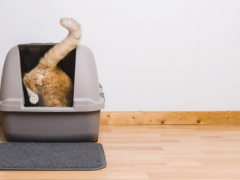
The question of how often your cat should visit the vet is a great one. Some people don’t take their cats to the vet for many years. Others seem to continually take their cats to the vet.
This article aims to discuss this topic in detail and provide you with specific recommendations for how often your cat should visit the vet.
How often a cat should visit the vet will depend on their age, stage of life, and individual medical needs. Wellness exams are recommended even for apparently healthy cats to detect unknown issues. Preventative care can be done to an extent at home in between veterinary visits.Key Takeaways
Also Read: The Complete Guide To Feline Nutrition
How Often Cats Should Visit The Vet
Your cat’s veterinary needs will shift throughout their life. As a general rule:
- Young kittens should visit the vet every two to four weeks until they are three months of age. During a kitten’s first year, repeated visits every few months are recommended for routine wellness exams.
- Take adult cats to visit the vet once a year,
- Take elderly cats for a checkup every six months.
- Monthly visits are recommended for cats that have ongoing age-related issues.
With kittens, frequent visits to the vet need to be made to ensure that they are fully vaccinated against common infectious diseases. This includes rounds of vaccinations against Feline Panleukopenia (FP) or Distemper, Feline Herpes Virus (FHV-1) (also known as Feline Viral Rhinotracheitis), and Feline Calicivirus (FCV). These are all part of the standard FVRCP vaccine. Feline Leukemia Vaccine is also often recommended. Protection against parasites is also very important, as cats are very vulnerable when young.
For adult and geriatric cats (cats that are 10+ years of age), repeated vaccine boosters are often needed to maintain optimal protection against some viral diseases. Regular rabies vaccines may even be legally necessary in some areas.
Regular treatment for parasites (e.g. against worms, fleas, and ticks) is often recommended throughout a cat’s life.
Also Read: Top 10 Things Your Vet Wishes You Knew
Why Are Regular Vet Visits Needed For Cats?

Some conditions are not detectable and require a veterinary diagnosis to properly treat.
Preventative care is an important part of general guidelines for good health care. Furthermore, a wellness exam for a cat who seems healthy can uncover unexpected issues. The preventive approach maintains that a long and healthy life is most likely to be achieved with the assistance of regular veterinary checks.
Weighing a cat regularly is important for monitoring general health and calculating correct medication doses. A number of common illnesses (such as hyperthyroidism and diabetes, as well as liver or kidney disease) often cause weight loss as an early sign.
Cats can suffer from a host of diseases that can be hidden from their owners. Since cats can’t talk, they can’t tell us that they are feeling unwell or suffering pain. Examples of conditions that may go undetected without the aid of a veterinarian include dental disease, heart disease, and arthritis. If these conditions are diagnosed by a vet early on, treatment can be given right away. There is then often an immediate visible improvement in the cat’s demeanor and quality of life.
There are also hidden diseases that cause very serious, even life-threatening consequences if left unchecked. Examples include high blood pressure and kidney disease, which need a urine or blood test for diagnosis.
And finally, some cats display behavior problems or undesirable behaviors. This situation can be helped significantly with simple advice from your veterinarian during routine checkups.
Also Read: Cat Bloodwork (Different Types of Tests, Health Conditions And Costs)
What Your Vet Will Look For

No matter what issue your cat may be having, a vet should give your cat a thorough examination to address other potential issues.
During a wellness check, before examining your cat, the vet will discuss your cat’s home environment. You will be asked many questions about your cat’s lifestyle and habits so that the vet learns more about your cat’s eating, drinking, toileting, and general activities. Your cat’s diet will be discussed in detail.
Any signs of ill health, such as vomiting or diarrhea need to be noted. Your cat’s vaccine history will be reviewed, and recommendations may be made on which booster vaccines may be needed. After this history gathering, your vet will proceed to the head-to-tail examination of your cat. The physical exam is very important.
The physical examination will typically go as follows:
- Your vet will usually weigh your cat, comparing the current weight with previous visits.
- Your cat’s head, eyes, ears, mouth, and teeth are checked, noting any abnormalities.
- Your cat’s entire body and its functioning are checked.
- The claws are inspected and perhaps trimmed. This is especially important for older pets who are less active, and not wearing down their nails as much.
- The skin and coat are carefully inspected.
- Any lumps and bumps are noted and discussed with you.
- A urine sample is collected to carry out a urinalysis.
- Blood samples are collected for diagnostic tests.
- Stool samples are requested for worm egg counts.
- Blood pressure is measured. This is important as high blood pressure is an invisible problem that’s common in older cats.
Also Read: Basepaws Cat Dental Health Test Review: We Tried It
What If You Can’t Afford It?

Preventative care at home is always a necessary step in keeping your cat as healthy and happy as possible.
If you cannot afford to take your cat to the vet for routine exams, you should at least attempt to take them for booster shots every three to four years. You should also use appropriate parasite protection products to ensure that your cat does not suffer from parasites.
Remember that investing in pet insurance can help to cover veterinary expenses. Insurance providers cover between 70-100% of vet bills after the deductible, and premiums can start as low as $10 per month.
Read our Lemonade Pet Insurance review.
There are also some steps that you can take at home to help avoid problems. For informational purposes, details that you collect at home using a more proactive approach can be very helpful.
Examples include:
- Weigh your cat regularly, and keep a record of the figures and dates. If your cat loses weight, then you absolutely need to take them to the vet.
- Periodically record your cat’s breathing rate. This should be no more than 25 breaths per minute when your cat is relaxed. If it is faster than this, you should take your cat to the vet.
- Measure how much water your cat drinks. Record what you add to their bowl at the start of each day. If there is a sudden increase in your cat’s water consumption, you need to take them to the vet.
- Measure how much your cat eats. Make a note of precisely how much moist and dry food they are consuming. Then if there are health issues at a later stage, it will be useful to show the vet this record.
- Gently examine your cat’s teeth every few months. They should be clean, with no build-up of tartar, no sign of tooth decay, and no recession of the gums. If this is not the case, you should take them to the vet for dental treatment. Home dental care is important. You should also brush your cat’s teeth daily, if you can, to reduce the chances of dental problems.
- Observe your cat carefully as they move around the home. If you notice that they have any difficulty jumping up or climbing stairs, take them to a vet to see if arthritis is the issue.
- Observe your cat’s litter box carefully. Look out for issues such as blood in the urine, diarrhea, or anything else unusual.
Also Read: What Is A Normal Heart Rate For A Cat?
Final Thoughts
A regular visit to your vet is the best way to ensure optimal health in your cat. If you are unable to afford this, at least, take some simple steps at home to monitor your cat’s overall health. This will help you spot potential problems at an earlier stage when they are easier to treat.
Also Read: Cat Suddenly Lethargic and Weak: Causes & Treatment
Frequently Asked Questions
How often should I take my indoor cat to the vet?
As a rule of thumb, a once-yearly visit to the vet, as a minimum, makes sense for most cats. This allows the vet to check your cat over thoroughly, identifying issues that may not be obvious to you, such as dental disease, heart disease, arthritis, or other underlying problems. It also makes sense to have an annual weigh-in, and to carry out a review of the need for vaccinations and parasite treatments: this varies, depending on the precise details of the cat and their lifestyle.
Older cats (over the age of ten) should see the vet every six months or so because issues such as high blood pressure and kidney disease become more common with age.
How often do cats need shots?
For adult and geriatric cats, repeated vaccine boosters are needed to maintain optimal protection against some viral diseases. The precise frequency depends on where you live, the local incidence of these diseases, and your cat’s lifestyle. Your local vet is the best person to give you advice on this. Regular rabies vaccines may be legally necessary in some areas; again, your vet will let you know about this.
What routine vet care do cats need?
All cats should see a vet at least once a year for a full health review, including a full physical, a weigh-in, and a discussion of vaccine and parasite control needs. It also helps to have a detailed discussion of anything their carer may have noticed about them, including any unusual behaviors (for example, a cat that starts to move slowly upstairs could be suffering from early signs of arthritis).
How long can a cat be left alone?
No animal should ever be left unmonitored by humans for more than twelve hours. Even cats that are very independent, coming and going indoors and outdoors, need someone to check that they are comfortable, that they are eating normally, and that there are no signs of ill health.







